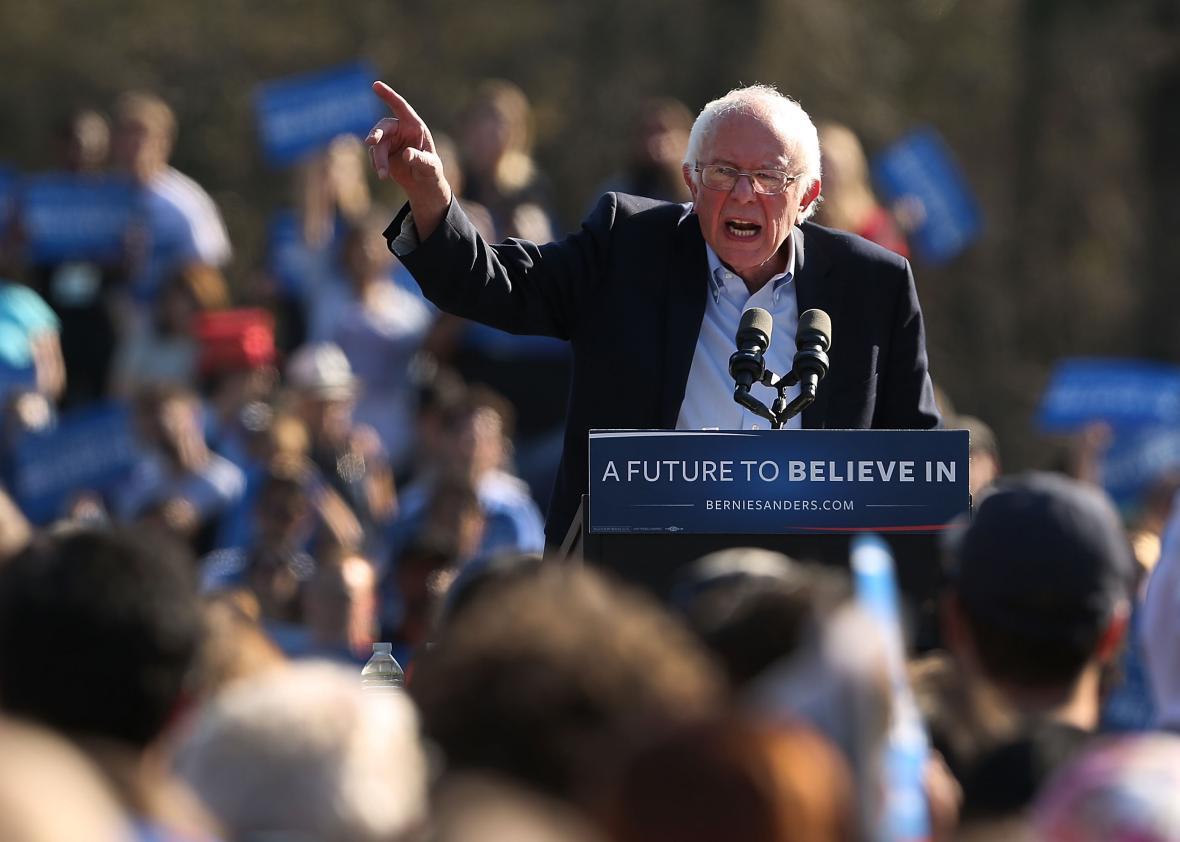Bernie Sanders needs every vote he can get if he’s going to prove the pollsters wrong and win New York on Tuesday. Bernie has at least one big problem, though: The state’s strict registration rules have shrunk the pool of his potential voters.
Unlike, say, the Michigan Democratic primary, which was open to all registered voters—and where Sanders ultimately beat his polling average by a staggering 23 points—the New York contest is open only to registered Democrats. And the deadline to register with a particular party was last month for new voters, and last October for existing ones (as Donald Trump’s children discovered too late). As FiveThirtyEight’s Leah Libresco illustrates with this helpful chart, that makes it more difficult for voters to switch their party affiliation in New York than in any other state with a closed primary:
Bernie ripped into that reality on Tuesday. “Today, 3 million people in the state of New York who are independents have lost their right to vote in the Democratic or Republican primary,” he told reporters, adding that the nominating contests were being funded with taxpayer dollars and administered by the state government. “That’s wrong.” (His 3 million figure is a reference to the number of voters in New York who are either not registered with a party or are registered with a host of lesser-known third-parties. Many of them may be just fine with that.) Sanders’ supporters have taken to social media to express similar sentiments:
Regardless of where you come down on the merits of Sanders’ argument—personally, I would like to see anyone eligible to vote have the chance to cast a ballot in whichever race they want to—it’s clear the closed system works against his insurgent campaign since he tends to fare much better than Hillary Clinton among independents. The Washington Post’s Philip Bump crunched the numbers earlier this year from the first 15 states where exit polling was available and concluded that in eight of those contests, at least 40 percent of Sanders’ support came from self-declared independents. In at least three of those states, those same voters were likely responsible for handing Sanders the win: New Hampshire, Oklahoma, and Michigan. (Remove the independents from the equation, and Bump estimated Clinton would have picked up another 150 delegates in those 15 contests.)
There are limits to what exit polls can tell us—a voter in an open primary, for instance, could be a registered Democrat and identify as an independent, or vice versa—but it’s clear that the Empire State’s strict rules pose a significant challenge to Bernie on Tuesday. Sanders will have to hope that his young and independent-minded supporters had the motivation and foresight to fill out their necessary paperwork before the deadlines. For new voters, that meant registering by March 25, aka before Bernie’s five most recent state victories. And for existing voters who weren’t already Democrats, that meant switching by Oct. 9, 2015—four months before Sanders notched his first primary victory and back when there was still at least some doubt about whether the candidate himself was technically a Democrat.
Read more of Slate’s coverage of the 2016 campaign.
